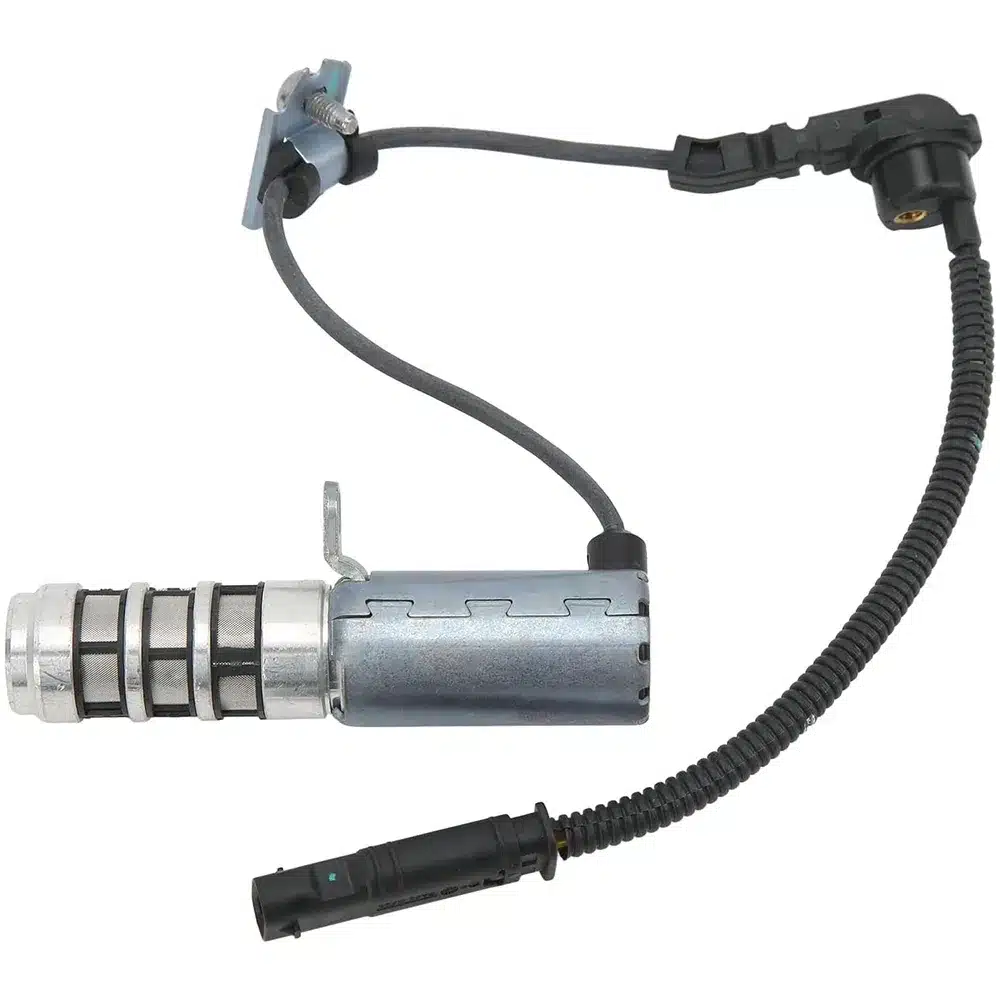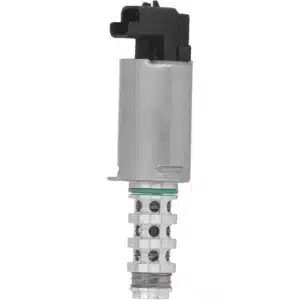Last Updated on 2025-06-24 by Car Parts Expert
In the complex and precise mechanical structure of the car, each component plays a vital role and jointly maintains the normal operation of the whole vehicle. Among them, the oil pump solenoid valve (Oil Pump Solenoid Valve) is an important part of the engine lubrication system. Its performance and reliability directly affect the working efficiency and life of the engine. This article will deeply explore the working principle, structural characteristics, fault diagnosis and maintenance of the automobile oil pump solenoid valve, as well as its application and development trend in modern automobile technology.
1. Working principle of oil pump solenoid valve
The oil pump solenoid valve is a key actuator in the engine electronic control system. It accurately controls the oil supply of the oil pump according to the instructions of the engine control unit (ECU) to meet the lubrication needs of the engine under different working conditions. When the engine is started, the ECU calculates the required oil flow under the current working conditions based on the data collected by various sensors (such as crankshaft position sensor, accelerator pedal position sensor, etc.), and adjusts the output pressure of the oil pump by controlling the opening and closing time and frequency of the oil pump solenoid valve, thereby realizing precise control of the oil flow.
Specifically, the oil pump solenoid valve is usually composed of electromagnets, valve cores, springs and other components. When the electromagnet is energized, a magnetic field is generated to attract the valve core to move, thereby changing the opening of the valve and allowing the oil to pass. When the electromagnet is de-energized, the spring pushes the valve core back to its original position, closes the valve, and prevents the oil from passing. By controlling the on and off time of the electromagnet, the flow and pressure of the oil can be accurately controlled.
2. Structural characteristics of the oil pump solenoid valve
The structural design of the oil pump solenoid valve usually focuses on the following points:
High precision: Since the oil pump solenoid valve needs to accurately control the flow and pressure of the oil, its design must ensure high precision. This is usually achieved by using precision processing technology and high-quality materials.
High reliability: The oil pump solenoid valve is one of the core components of the engine lubrication system, and its reliability is directly related to the safe operation of the engine. Therefore, the stability and durability under various extreme working conditions need to be considered during the design.
Fast response: In order to meet the rapid response requirements of the engine under different working conditions, the oil pump solenoid valve must have a faster response speed. This is usually achieved by optimizing the design and control strategy of the electromagnet.
Compact structure: Due to the limited space inside the car, the oil pump solenoid valve usually adopts a compact structure design to save space and facilitate installation.
- Sale!
 Rated 0 out of 5
Rated 0 out of 5$60.90Original price was: $60.90.$49.90Current price is: $49.90. - Sale!
 Rated 0 out of 5
Rated 0 out of 5$60.90Original price was: $60.90.$45.90Current price is: $45.90. - Sale!
 Rated 0 out of 5
Rated 0 out of 5$60.90Original price was: $60.90.$45.90Current price is: $45.90. - Sale!
 Rated 0 out of 5
Rated 0 out of 5$60.90Original price was: $60.90.$49.90Current price is: $49.90.
3. Fault diagnosis and repair of oil pump solenoid valve
As a key component of the engine lubrication system, the oil pump solenoid valve may cause poor lubrication, overheating or even damage to the engine. Therefore, timely detection and elimination of oil pump solenoid valve faults are essential to ensure the normal operation of the engine.
Common fault types of oil pump solenoid valve
Solenoid valve stuck: The solenoid valve cannot move smoothly due to impurities in the oil or wear inside the solenoid valve, which affects the flow control of the oil.
Damaged electromagnet: The electromagnet is one of the core components of the oil pump solenoid valve. If the electromagnet is damaged or the circuit is faulty, it will not generate enough magnetic field to drive the valve core to move.
Poor valve core sealing: Poor sealing between the valve core and the valve seat may cause oil leakage, thereby affecting the flow and pressure control of the oil.
Fault diagnosis method of oil pump solenoid valve
Observation method: Observe the appearance and connection lines of the oil pump solenoid valve to check whether there is any damage or looseness.
Resistance measurement method: Use a multimeter to measure the resistance value of the oil pump solenoid valve to determine whether it is within the normal range. If the resistance value is too large or too small, it may indicate that there is a fault inside the solenoid valve.
Voltage test method: When the engine is running, use a voltmeter to measure the voltage value of the oil pump solenoid valve to determine whether it is working properly. If the voltage value is abnormal, it may indicate that there is a fault in the control circuit.
Repair method of oil pump solenoid valve
Cleaning the solenoid valve: For the solenoid valve stuck due to impurities, you can try to clean the inside of the solenoid valve to restore its normal function. However, it should be noted that the sealing parts of the solenoid valve should be avoided during the cleaning process.
Replace the solenoid valve: For the solenoid valve failure that cannot be repaired, a new solenoid valve needs to be replaced to restore the normal lubrication of the engine. During the replacement process, it should be ensured that the model and specifications of the new solenoid valve are consistent with the original vehicle, and it should be installed and debugged in strict accordance with the requirements of the maintenance manual.
Check and repair the control circuit: If the fault is caused by the control circuit, it is necessary to check and repair the circuit break, short circuit or poor contact. During the repair process, it should be ensured that the line connection is firm and reliable, and the insulating tape should be used to wrap it to prevent the occurrence of short circuit or grounding fault.




4.Application and development trend of oil pump solenoid valve in modern automobile technology
With the continuous development of automobile technology, the role of oil pump solenoid valve in the engine lubrication system is becoming more and more important. Modern cars generally use electronic control systems to precisely control the engine, and the oil pump solenoid valve is one of the actuators, and its performance and reliability directly affect the working efficiency and life of the engine.
Application status of oil pump solenoid valve
At present, most modern cars are equipped with electronically controlled oil pump systems, among which the oil pump solenoid valve is one of the key components for achieving precise control. Through the precise control of the oil pump solenoid valve by the ECU, the flow and pressure of the oil can be adjusted according to the real-time working conditions of the engine, thereby meeting the lubrication needs of the engine under different working conditions. This control method not only improves the lubrication efficiency of the engine, but also reduces fuel consumption and emissions.
Development trend of oil pump solenoid valve
In the future, with the continuous development of automobile technology and increasingly stringent environmental protection requirements, the oil pump solenoid valve will develop in the direction of higher precision, higher reliability and lower energy consumption. At the same time, with the popularization and application of intelligent network technology, the oil pump solenoid valve will also be more closely integrated and coordinated with other engine components to achieve more intelligent lubrication control.
High-precision control: With the continuous advancement of sensor technology and control algorithms, the oil pump solenoid valve will be able to achieve higher-precision flow and pressure control to meet the precise lubrication needs of the engine under different working conditions.
High reliability design: In order to improve the reliability and durability of the oil pump solenoid valve, more advanced materials and processes may be used for manufacturing in the future, and the monitoring and protection of its working environment will be strengthened.
Low energy consumption design: With the increasingly stringent environmental protection requirements and the popularity of electric vehicles, the oil pump solenoid valve will pay more attention to energy-saving design in the future to reduce the energy consumption and emissions of automobiles.
Intelligent networking technology: With the continuous development of intelligent networking technology, the oil pump solenoid valve will be more closely integrated and coordinated with other engine components to achieve more intelligent lubrication control. For example, through real-time communication and data sharing with the ECU, the oil pump solenoid valve can be adaptively adjusted according to the real-time working conditions and driving habits of the engine to improve lubrication efficiency and driving experience.
oil pump solenoid valve is one of the key components of the engine lubrication system
As one of the key components of the engine lubrication system, the performance and reliability of the automobile oil pump solenoid valve directly affect the working efficiency and life of the engine. By deeply understanding the working principle, structural characteristics, fault diagnosis and maintenance of the oil pump solenoid valve, as well as its application and development trend in modern automobile technology, we can better maintain and maintain the automobile engine, extend its service life and improve the driving experience. In the future, with the continuous development of automobile technology and increasingly stringent environmental protection requirements, the oil pump solenoid valve will develop towards higher precision, higher reliability and lower energy consumption, injecting new vitality into the development of modern automobiles.











